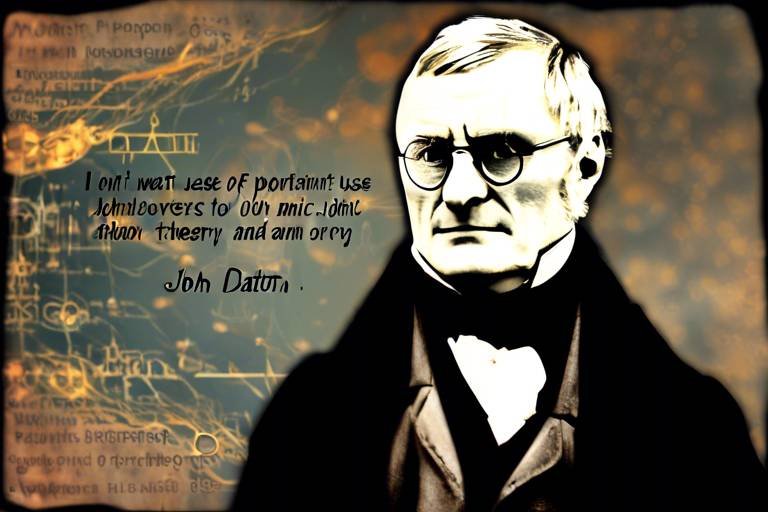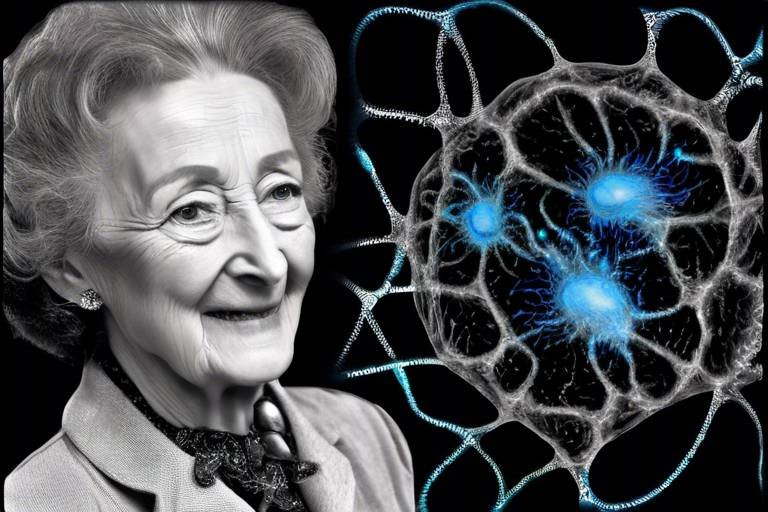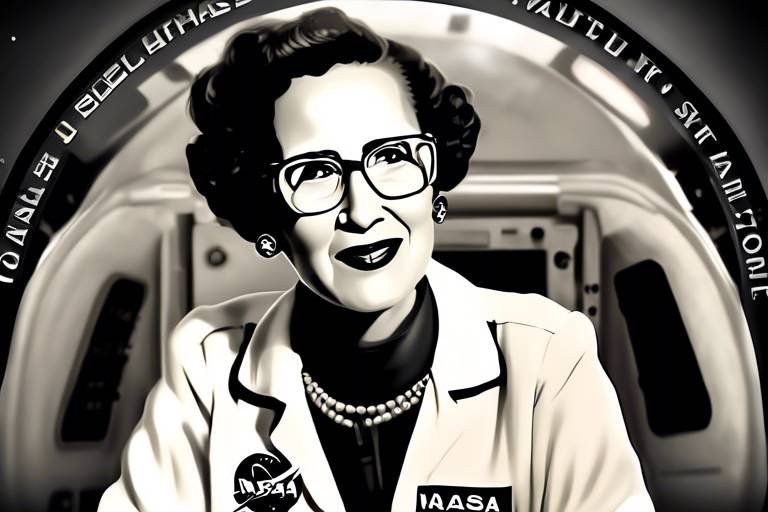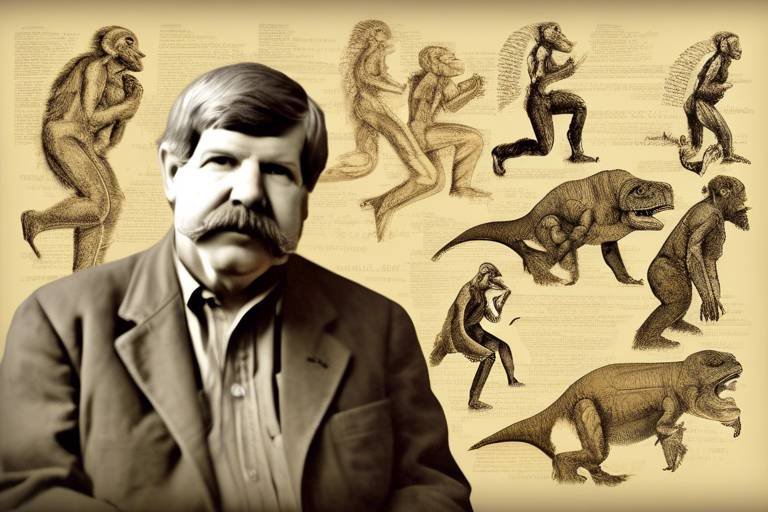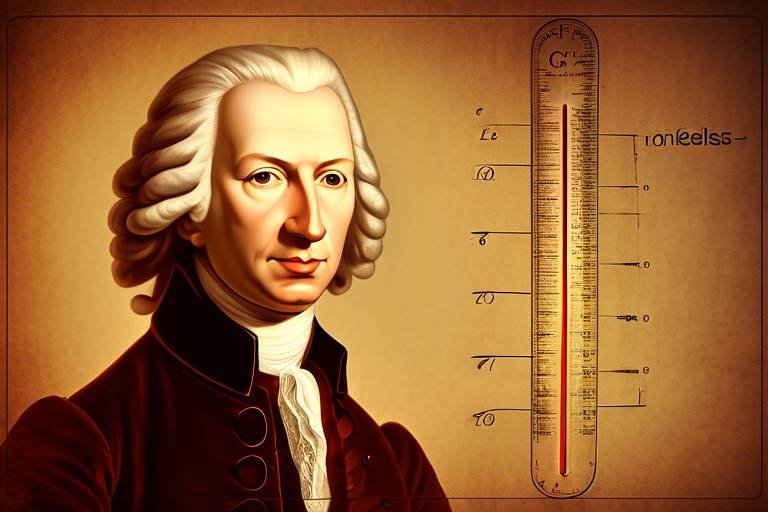The Discoveries of John Dalton and Atomic Theory
When we think about the building blocks of matter, it's hard not to feel a sense of awe at the intricate world of atoms. John Dalton, a name that resonates through the corridors of scientific history, was a pioneer who brought clarity to this complex realm. His groundbreaking work in the early 19th century laid the foundation for what we now understand as atomic theory. But what exactly did Dalton discover, and why are his contributions so significant? In this article, we will explore Dalton's life, his revolutionary atomic theory, and the lasting impact he had on the field of chemistry.
Dalton was born in 1766 in a small village in England, where his humble beginnings shaped his curious mind. Despite limited formal education, he was determined to learn, often experimenting with the natural world around him. His passion for science eventually led him to propose a theory that would change how we view the material world. As we delve deeper into the essence of Dalton's discoveries, we will uncover the core principles of his atomic theory and how they transformed the scientific landscape.
Dalton's atomic theory is not just a collection of ideas; it represents a paradigm shift in our understanding of matter. At its core, Dalton proposed that all matter is made up of tiny, indivisible particles called atoms. This was a radical concept at the time, challenging the notion that matter could be infinitely divided. Dalton's theory also introduced the idea that atoms of different elements have unique weights and combine in specific ratios to form compounds. This insight was crucial for the development of modern chemistry, paving the way for future discoveries and innovations.
Throughout this article, we will dissect the key postulates of Dalton's atomic theory, examine his experimental methodologies, and reflect on the profound impact his work has had on modern science. From the law of multiple proportions to the indivisibility of atoms, Dalton's insights were not just theoretical; they were grounded in rigorous experimentation and observation. Join us as we embark on this journey through the life and legacy of John Dalton, a true trailblazer in the world of atomic science.
- What is Dalton's atomic theory? Dalton's atomic theory posits that all matter is composed of indivisible atoms, which combine in fixed ratios to form compounds.
- Why is John Dalton significant? Dalton is significant for developing the first comprehensive atomic theory, which laid the groundwork for modern chemistry.
- What are the key postulates of Dalton's atomic theory? The key postulates include the indivisibility of atoms, the conservation of mass, and the law of multiple proportions.
- How did Dalton's work influence modern chemistry? Dalton's work influenced modern chemistry by establishing foundational concepts that led to the development of the periodic table and advancements in chemical bonding theories.

John Dalton: A Brief Biography
John Dalton was born on September 6, 1766, in the small town of Eaglesfield, England. Growing up in a modest Quaker family, Dalton's early life was marked by a strong emphasis on education and intellectual inquiry. His father was a weaver, and Dalton's humble beginnings instilled in him a sense of determination and curiosity that would later fuel his scientific pursuits. From a young age, he exhibited a keen interest in the natural world, often engaging in experiments and observations that would lay the groundwork for his future contributions to science.
Dalton's formal education began at a local Quaker school, where he excelled in subjects like mathematics and natural philosophy. However, his education was cut short due to financial constraints, prompting him to become a teacher at the age of 12. This experience not only honed his teaching skills but also allowed him to delve deeper into scientific literature, shaping his understanding of chemistry and physics. Dalton's thirst for knowledge led him to study the works of renowned scientists such as Isaac Newton and Robert Boyle, which would later influence his own theories.
In 1793, Dalton moved to Manchester, where he became involved with the Manchester Literary and Philosophical Society. This vibrant intellectual community provided him with the opportunity to collaborate with other scientists and share his findings. It was during this period that he began to formulate his groundbreaking ideas about atomic theory. Dalton's work was not only a product of his observations but also reflected the scientific climate of the time, which was ripe for new ideas and discoveries.
Despite facing challenges, including a lack of formal recognition and resources, Dalton's persistence paid off. His first major publication in 1803, titled "A New System of Chemical Philosophy," introduced his atomic theory to the world. In this work, he proposed that matter is composed of indivisible particles called atoms, each with its own unique weight. This revolutionary idea marked a significant departure from the classical theories of matter and laid the foundation for modern chemistry.
Throughout his life, Dalton continued to conduct experiments and refine his theories. He was also known for his research on color blindness, a condition he himself had, which he described in detail. Dalton's contributions extended beyond atomic theory; he was a pioneer in the field of gas laws and the study of atmospheric pressure. His meticulous approach to scientific inquiry and his dedication to understanding the fundamental principles of matter earned him a place in the annals of scientific history.
John Dalton passed away on July 27, 1844, but his legacy endures. His pioneering work in atomic theory not only transformed the field of chemistry but also paved the way for future scientists to explore the intricacies of the atomic world. Today, Dalton is remembered not just for his discoveries, but for his unwavering commitment to science, which continues to inspire generations of researchers and students alike.

Dalton's Atomic Theory
John Dalton's atomic theory, formulated in the early 19th century, marked a monumental shift in the way scientists understood the nature of matter. Before Dalton, the concept of atoms was largely philosophical, lacking empirical evidence and rigorous scientific foundation. Dalton, however, brought a fresh perspective, grounding his ideas in systematic experimentation and observation. His theory proposed that matter is composed of tiny, indivisible particles called atoms, which are the fundamental building blocks of all substances. This notion was revolutionary, as it suggested that all chemical reactions involve the rearrangement of these atoms, rather than the transformation of the substances themselves.
One of the most significant aspects of Dalton's atomic theory is its emphasis on the uniqueness of atoms from different elements. Dalton posited that each element is composed of its own kind of atoms, which differ in mass and properties. This idea laid the groundwork for the development of the periodic table, as it suggested that elements could be categorized based on their atomic characteristics. Dalton's theory also introduced the concept of compounds, stating that when atoms of different elements combine, they form compounds in fixed ratios. This was a huge leap forward in understanding chemical combinations and reactions.
Dalton's atomic theory is built upon several key postulates that serve as its foundation. The core ideas include:
- All matter is made up of atoms: These atoms are indivisible and cannot be created or destroyed in a chemical reaction.
- Atoms of the same element are identical: They have the same mass and properties, while atoms of different elements differ in mass and properties.
- Compounds are formed when atoms of different elements combine: The atoms combine in simple whole-number ratios to form compounds.
- In chemical reactions, atoms are rearranged: While the atoms themselves are not changed, they can be separated, combined, or rearranged to form new substances.
These postulates not only provided a framework for understanding chemical reactions but also sparked further research into atomic structure and bonding. For instance, Dalton's assertion that atoms are indivisible was a stepping stone for later discoveries in particle physics, leading to the identification of subatomic particles like protons, neutrons, and electrons. This evolution of thought demonstrates how Dalton's theory served as a catalyst for future scientific advancements.
In summary, Dalton's atomic theory was instrumental in transforming the scientific landscape of chemistry. By proposing that matter consists of indivisible atoms and establishing the principles of chemical combination, Dalton laid the groundwork for the modern understanding of chemistry. His work not only advanced the field but also inspired countless scientists to explore the atomic world further, ultimately leading to the rich tapestry of knowledge we have today.

Postulates of Dalton's Theory
John Dalton's atomic theory was revolutionary, reshaping our understanding of matter and how it interacts. At the core of his theory were several key postulates that laid the groundwork for modern chemistry. These principles were not merely abstract ideas; they were based on meticulous observations and experiments that Dalton conducted throughout his career. Let's delve into the fundamental postulates that defined Dalton's atomic theory.
The first postulate states that all matter is composed of extremely small particles called atoms. Dalton proposed that these atoms are indivisible and cannot be created or destroyed in chemical reactions. This idea was groundbreaking at the time, as it challenged the prevailing notion that matter could be infinitely divided. Imagine trying to split a marble into smaller and smaller pieces until you reach a point where it can no longer be divided; this is akin to Dalton's concept of the atom.
Another crucial postulate is that atoms of a given element are identical in mass and properties. Dalton asserted that each element is characterized by its unique type of atom, which is different from atoms of other elements. For example, the atoms of oxygen are not only distinct in mass but also in their chemical behavior compared to atoms of hydrogen. This differentiation is vital in understanding chemical reactions, as it explains why elements combine in specific ways.
Dalton also introduced the law of multiple proportions, which states that when two elements combine to form more than one compound, the ratios of the masses of the second element that combine with a fixed mass of the first element can always be expressed as ratios of small whole numbers. This principle is exemplified when we consider carbon and oxygen, which can form both carbon monoxide (CO) and carbon dioxide (CO2). The ratios of the masses of oxygen in these compounds reveal the consistent patterns that Dalton identified.
Furthermore, Dalton's theory emphasized that chemical reactions involve the rearrangement of atoms. This means that while the atoms themselves remain intact, they can form new combinations to create different substances. This idea was revolutionary in understanding how substances interact during chemical reactions, laying the foundation for the field of stoichiometry.
To summarize, the postulates of Dalton's atomic theory are:
- All matter is composed of atoms, which are indivisible.
- Atoms of a given element are identical in mass and properties.
- Atoms of different elements differ in mass and properties.
- Atoms combine in simple whole-number ratios to form compounds.
- In a chemical reaction, atoms are rearranged but not created or destroyed.
Each of these postulates contributed to a more profound understanding of the microscopic world, allowing scientists to predict how substances would behave during chemical reactions. Dalton's insights paved the way for future advancements in chemistry, leading to the development of the periodic table and the modern understanding of atomic structure.
1. What is Dalton's atomic theory?
Dalton's atomic theory is a scientific theory that describes the nature of matter, proposing that all matter is made up of atoms, which are indivisible particles that combine in specific ratios to form compounds.
2. Why was Dalton's atomic theory important?
Dalton's atomic theory was crucial because it provided a framework for understanding chemical reactions and the composition of matter, which was a significant departure from earlier theories that lacked empirical support.
3. How did Dalton's experiments support his theory?
Dalton conducted various experiments, including gas laws and the study of chemical reactions, which led him to conclude that elements combine in fixed ratios, supporting his postulates about atomic behavior.
4. Are atoms really indivisible?
While Dalton proposed that atoms are indivisible, modern science has shown that atoms can be divided into subatomic particles (protons, neutrons, and electrons). However, Dalton's concept of atoms as the basic building blocks of matter remains foundational in chemistry.

Indivisibility of Atoms
When we think about the building blocks of matter, the idea of indivisible atoms is a concept that has profoundly shaped our understanding of the universe. John Dalton, in his groundbreaking atomic theory, proposed that atoms are the smallest units of matter and cannot be divided into smaller parts. This notion was revolutionary for its time, as it challenged the prevailing beliefs of the early 19th century, which often included various theories of matter that suggested otherwise. Imagine trying to build a house with bricks that could be split into smaller pieces; it would be quite a chaotic construction, wouldn’t it? Dalton’s assertion that atoms are indivisible provided a solid foundation for the field of chemistry.
Dalton's idea of indivisibility meant that each element consists of identical atoms that are unique to that element. For instance, all hydrogen atoms are alike, and all oxygen atoms are alike, but a hydrogen atom is distinct from an oxygen atom. This concept not only simplified the study of chemical reactions but also paved the way for a more structured approach to understanding how elements interact with one another. The indivisible nature of atoms suggests that during chemical reactions, these atoms rearrange themselves to form new compounds without changing their individual identities. It’s like a dance where the partners change positions but remain the same dancers!
However, as science advanced, particularly with the advent of particle physics, the idea of indivisible atoms came under scrutiny. It was discovered that atoms themselves are composed of even smaller particles: protons, neutrons, and electrons. This revelation did not diminish Dalton's contributions; rather, it expanded our understanding of atomic structure. Dalton's theory served as a crucial stepping stone that led to the development of quantum mechanics and the exploration of subatomic particles. The journey from Dalton’s indivisible atoms to the complex world of quantum physics illustrates the ever-evolving nature of scientific inquiry.
Ultimately, Dalton's assertion of atomic indivisibility was not just a statement about the nature of matter; it was a catalyst for future discoveries in chemistry and physics. It encouraged scientists to delve deeper into the atomic world, leading to innovations that have transformed our understanding of everything from chemical bonding to the periodic table. In essence, while we now know that atoms can be split, Dalton’s legacy remains intact, reminding us of the importance of foundational ideas in the scientific process.

Law of Multiple Proportions
The is one of those concepts that can make your head spin at first, but once you grasp it, you'll see just how profound and exciting it is! Imagine you have two different compounds made from the same elements, but in different ratios. Dalton's law states that when two elements form more than one compound, the masses of one element that combine with a fixed mass of the other are in a ratio of small whole numbers. It’s like a dance between elements, where they can partner up in various ways, but the total number of steps (or masses) always follows a predictable pattern.
For instance, consider the elements carbon and oxygen. They can combine to form two distinct compounds: carbon monoxide (CO) and carbon dioxide (CO2). If we break down their compositions, we find that:
| Compound | Mass of Carbon (g) | Mass of Oxygen (g) |
|---|---|---|
| Carbon Monoxide (CO) | 12 | 16 |
| Carbon Dioxide (CO2) | 12 | 32 |
In this example, if we take 12 grams of carbon, it combines with 16 grams of oxygen to form carbon monoxide, but if we keep that same 12 grams of carbon and switch to carbon dioxide, it now combines with 32 grams of oxygen. The ratio of the masses of oxygen that combine with a fixed mass of carbon is:
16:32, which simplifies to 1:2. This is a classic example of the law in action, showcasing how the same elements can create different compounds by altering the proportions in which they combine.
This law not only highlights the beauty of chemistry but also lays the groundwork for understanding the stoichiometry of chemical reactions. It teaches us that while elements may play different roles in forming compounds, the relationships between their masses are governed by simple numerical ratios. Dalton's law was revolutionary because it provided a solid framework for chemists to predict how elements would interact, opening the door to a deeper understanding of chemical behavior.
In essence, the Law of Multiple Proportions is a reminder that in the world of atoms, there’s a rhythm and pattern to the way elements come together to form the substances we see and use every day. It’s like a recipe where the ingredients can vary, but the final dish remains deliciously consistent!
- What is the Law of Multiple Proportions? - It states that when two elements combine to form more than one compound, the masses of one element that combine with a fixed mass of the other are in a ratio of small whole numbers.
- Can you give an example? - Yes! The compounds carbon monoxide (CO) and carbon dioxide (CO2) illustrate this law, with the mass ratio of oxygen being 1:2 when combined with a fixed mass of carbon.
- Why is this law important? - It helps chemists understand the stoichiometry of reactions and predict how different elements will combine, which is crucial for chemical synthesis and analysis.
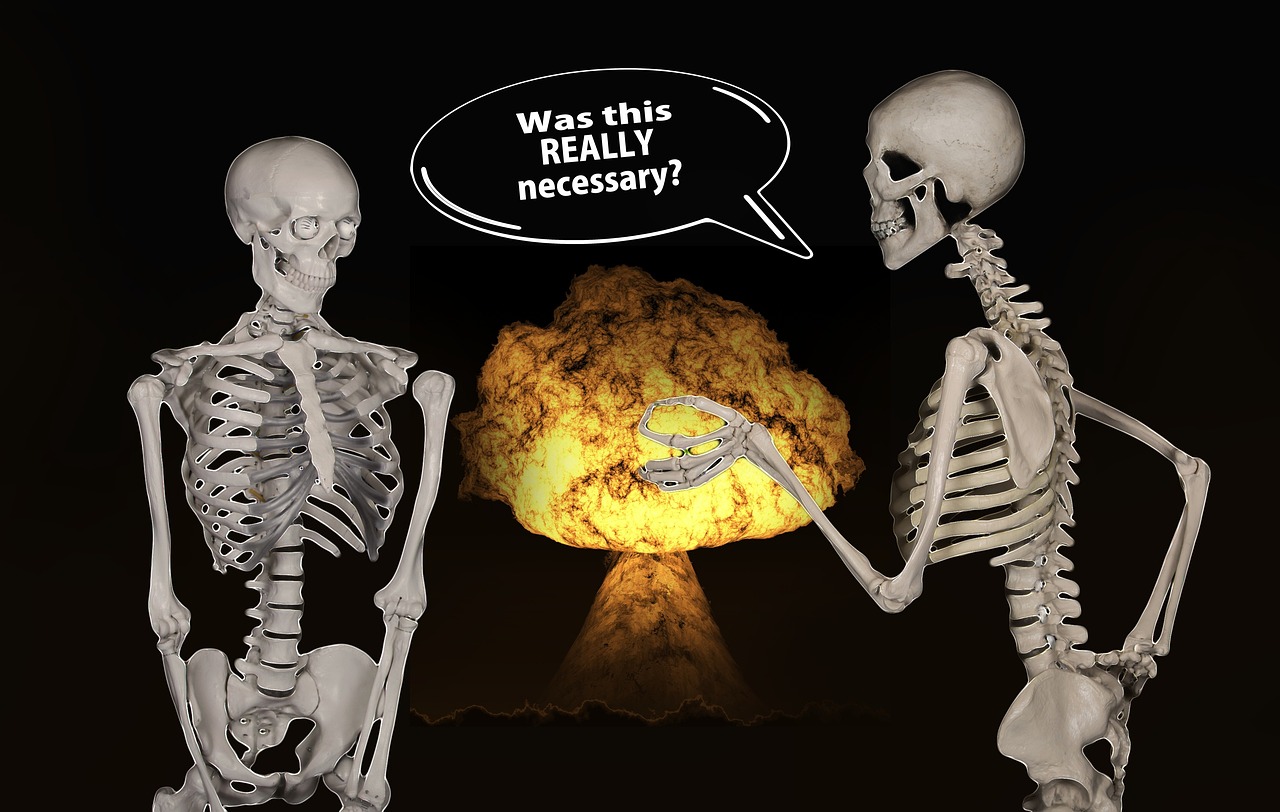
Dalton's Experiments
John Dalton, the father of modern atomic theory, conducted a series of groundbreaking experiments in the early 19th century that laid the foundation for our understanding of matter. His meticulous approach and keen observations led him to formulate ideas that were revolutionary for his time. One of the most significant experiments involved studying the behavior of gases. Dalton meticulously examined how gases combined in specific ratios, which ultimately led him to propose his law of partial pressures. This law states that the pressure exerted by a mixture of gases is equal to the sum of the pressures that each gas would exert if it occupied the space alone. Imagine a bustling crowd at a concert—each person contributes to the overall noise level, yet each voice can be heard distinctly. This analogy illustrates how individual gases contribute to the total pressure in a mixture.
Another pivotal experiment Dalton conducted involved the study of color blindness, a condition he personally experienced. His observations on how certain individuals could not distinguish between colors led him to propose that this was due to a deficiency in the perception of specific wavelengths of light. This unique perspective not only highlighted his scientific curiosity but also showcased his ability to connect personal experience with scientific inquiry. Dalton's work in this area paved the way for future studies in optics and human perception, demonstrating how one man's challenges can lead to broader scientific understanding.
Dalton's experiments with chemical reactions were equally significant. He carefully observed how elements combined to form compounds and noted the consistent mass ratios in which these elements combined. This meticulous documentation of chemical reactions allowed him to formulate his law of multiple proportions, which states that when two elements form more than one compound, the ratios of the masses of one element that combine with a fixed mass of the other are simple whole numbers. For example, if you were to combine hydrogen and oxygen, you could produce water (H2O) and hydrogen peroxide (H2O2). The mass ratios of hydrogen to oxygen in these compounds are 1:8 and 1:16, respectively, showcasing the simplicity and beauty of chemical combinations.
In addition to his gas experiments and studies on color blindness, Dalton also utilized a technique known as the method of mixtures. By mixing various gases and observing the resulting reactions, he was able to infer the existence of atoms as the fundamental building blocks of matter. This method was akin to a chef experimenting with different ingredients to discover new flavors. Dalton's experiments were not just about observing; they were about understanding the underlying principles of how matter interacts at its most basic level.
Dalton meticulously documented all his findings, and his writings, particularly the seminal work "A New System of Chemical Philosophy," laid out his theories in a structured manner. This publication was not just a collection of experiments; it was a manifesto for the new era of chemistry. In it, Dalton outlined his atomic theory and provided a detailed account of his experiments, making it accessible for other scientists to build upon his work. His systematic approach to experimentation and data collection set a standard for future scientific inquiry.
In summary, John Dalton's experiments were pivotal in shaping the field of chemistry. His innovative methods and groundbreaking discoveries not only advanced the understanding of atomic theory but also inspired future generations of scientists. Just like a pebble thrown into a pond creates ripples that spread far and wide, Dalton's work continues to influence the scientific community today. His legacy lives on in the principles of chemistry that we study and apply in various fields, from medicine to engineering.
- What was John Dalton's most significant contribution to science?
Dalton's most significant contribution was the formulation of atomic theory, which revolutionized the understanding of matter and chemical reactions. - How did Dalton's experiments influence modern chemistry?
Dalton's experiments established foundational principles such as the law of multiple proportions and the concept of indivisible atoms, which paved the way for the development of the periodic table and modern chemical bonding theories. - What was the law of partial pressures?
The law of partial pressures states that the total pressure exerted by a mixture of gases is equal to the sum of the pressures that each gas would exert if it occupied the space alone.

Impact on Modern Chemistry
John Dalton's contributions to atomic theory were nothing short of revolutionary, fundamentally altering the landscape of modern chemistry. Before Dalton, the understanding of matter was fragmented and often based on philosophical musings rather than empirical evidence. Dalton introduced a systematic approach that emphasized the importance of atoms as the basic building blocks of matter. His work not only provided a coherent framework for understanding chemical reactions but also laid the groundwork for future scientists to explore the intricacies of atomic structure and interactions.
One of the most significant impacts of Dalton's atomic theory was the establishment of the periodic table. By classifying elements based on their atomic weights and properties, Dalton's ideas encouraged chemists to look for patterns and relationships among different substances. This paved the way for Dmitri Mendeleev, who later developed the periodic table we use today. Dalton's insights into the nature of elements and compounds helped chemists recognize that elements could combine in specific ratios to form compounds, a concept that is fundamental to modern chemistry.
Furthermore, Dalton's work influenced the development of chemical bonding theories. By proposing that atoms combine in whole-number ratios to form compounds, he set the stage for later theories that would explain how atoms interact at a deeper level. The understanding of ionic and covalent bonds, for instance, owes much to Dalton's foundational ideas. Scientists began to explore not just how atoms combined, but also how they shared or transferred electrons, leading to a more nuanced understanding of molecular structures.
Dalton's atomic theory also had implications beyond chemistry, impacting fields such as physics and biology. In physics, the idea of indivisible atoms spurred investigations into the nature of matter at the atomic and subatomic levels. This eventually led to the development of quantum mechanics, which challenges and expands upon Dalton's original ideas. In biology, the understanding of atoms and molecules has been crucial in biochemistry, where scientists explore the chemical processes that occur within living organisms.
In summary, John Dalton's discoveries were a catalyst for change in the scientific community. His atomic theory not only clarified the composition of matter but also ignited a chain reaction of research and discovery that continues to this day. The legacy of his work is evident in the way we teach chemistry, the methods we use to explore the universe, and our ongoing quest to understand the fundamental nature of reality.
- What is Dalton's atomic theory? Dalton's atomic theory is a scientific framework that describes matter as being composed of indivisible atoms, which combine in specific ratios to form compounds.
- How did Dalton's work influence modern chemistry? Dalton's work laid the groundwork for the periodic table, chemical bonding theories, and advanced our understanding of atomic structure and chemical reactions.
- What are the key postulates of Dalton's atomic theory? The key postulates include the indivisibility of atoms, the conservation of mass, and the law of multiple proportions.
- Why is Dalton considered a pioneer in chemistry? Dalton is considered a pioneer because he introduced a systematic approach to understanding chemical reactions and the nature of matter, which transformed chemistry into a more scientific discipline.

Advancements in Chemical Understanding
John Dalton's atomic theory was a true game changer in the realm of chemistry, acting as a catalyst for a multitude of advancements that followed. Before Dalton, the understanding of matter was rudimentary at best, often clouded by misconceptions and a lack of empirical evidence. However, Dalton's systematic approach to the composition of matter laid the groundwork for a more structured and scientific view of chemistry. His theory not only proposed that matter is made up of tiny, indivisible particles called atoms but also established a framework for how these atoms interact with one another.
One of the most significant advancements stemming from Dalton's work was the development of the concept of chemical compounds. Dalton proposed that atoms of different elements combine in specific ratios to form compounds, which was a revolutionary idea at the time. This concept was crucial in helping chemists understand that compounds are not just random mixtures of elements but rather specific combinations that follow predictable patterns. For instance, when hydrogen and oxygen combine to form water, they do so in a fixed ratio of 2:1. This realization paved the way for the formulation of the law of definite proportions, which states that a chemical compound always contains the same proportion of elements, regardless of its source or how it was prepared.
Furthermore, Dalton's insights into the behavior of gases led to the formulation of the gas laws, which describe how gases behave under different conditions. His work on partial pressures and the behavior of gas mixtures contributed to the understanding of how gases interact on a molecular level. This was not just an academic exercise; it had practical implications in fields ranging from meteorology to engineering. Scientists began to realize that the properties of gases could be predicted and manipulated, which opened up new avenues for research and technology.
In addition, Dalton's atomic theory provided a solid foundation for the eventual development of the periodic table. By categorizing elements based on their atomic weights and properties, chemists were able to see patterns and relationships that had previously gone unnoticed. This was crucial for the advancement of chemistry as it allowed for a more organized approach to studying elements and their interactions. The periodic table has since become an essential tool for chemists, enabling them to predict the behavior of elements and compounds based on their positions in the table.
The significance of Dalton's contributions cannot be overstated. His work not only advanced the field of chemistry but also influenced other scientific disciplines, including physics and biology. The understanding of atomic structure that emerged from his theory laid the groundwork for later discoveries, such as the identification of subatomic particles and the development of quantum mechanics. As scientists continued to explore the nature of atoms, they built upon Dalton's initial framework, leading to a more comprehensive understanding of matter and energy.
In conclusion, John Dalton's atomic theory was not just a stepping stone; it was a launchpad that propelled the field of chemistry into a new era of discovery. His ideas about the nature of atoms and their interactions have stood the test of time, influencing countless advancements and shaping the way we understand the world around us. The legacy of his work continues to inspire scientists today, reminding us of the power of inquiry and the importance of a solid theoretical foundation in the pursuit of knowledge.
- What was John Dalton's contribution to chemistry?
John Dalton is best known for formulating the atomic theory, which proposed that matter is composed of indivisible atoms and that these atoms combine in fixed ratios to form compounds.
- How did Dalton's atomic theory influence modern science?
Dalton's atomic theory laid the groundwork for the development of the periodic table, gas laws, and advancements in chemical bonding theories, shaping our understanding of matter.
- What are the main postulates of Dalton's atomic theory?
Dalton's theory includes several key postulates: atoms are indivisible, atoms of the same element are identical in mass and properties, and compounds are formed by the combination of different atoms in fixed ratios.

Legacy of John Dalton
John Dalton's legacy is nothing short of monumental in the realm of science. His pioneering work in atomic theory not only transformed chemistry but also laid the groundwork for modern physics. Imagine a world where the very building blocks of matter were a mystery—Dalton's insights illuminated this darkness, allowing future scientists to explore the intricacies of atomic structure and behavior. His theories have become foundational, influencing countless aspects of scientific inquiry and education.
One of the most significant aspects of Dalton's legacy is the establishment of the concept of atoms as the fundamental unit of matter. Before Dalton, the idea of what constituted an element was vague and often misunderstood. He introduced a clear, systematic approach to understanding chemical substances, asserting that each element is composed of unique atoms that differ in mass and properties. This notion has persisted through the ages and is still a cornerstone of chemistry today.
Moreover, Dalton's work paved the way for the development of the periodic table. His ideas about atomic weights and the combinations of elements inspired later chemists, such as Dmitri Mendeleev, to organize elements based on their atomic properties. This organization has been crucial for predicting the behavior of elements and understanding chemical reactions. Dalton's influence can be seen in the way the periodic table is taught in schools around the world, making chemistry more accessible and understandable to students.
Dalton's legacy extends beyond the classroom. His theories have had practical implications in various fields, including medicine, environmental science, and materials engineering. For instance, understanding atomic interactions has led to advancements in pharmaceuticals, allowing for the development of targeted drug therapies. Similarly, insights from atomic theory have informed environmental policies regarding pollution and sustainable practices.
To encapsulate Dalton's enduring impact, consider the following key contributions:
- Foundation of Atomic Theory: Dalton's postulates remain a fundamental part of chemistry education.
- Influence on the Periodic Table: His work inspired the systematic organization of elements.
- Advancements in Multiple Scientific Fields: From medicine to environmental science, Dalton's theories continue to shape research and applications.
In essence, John Dalton's legacy is a testament to the power of inquiry and the relentless pursuit of knowledge. His ability to question established norms and seek out answers has inspired generations of scientists. As we continue to unravel the mysteries of the universe, Dalton's contributions serve as a reminder of the importance of foundational theories in guiding our understanding of the natural world.
1. What was John Dalton's most significant contribution to science?
Dalton's most significant contribution was the formulation of atomic theory, which proposed that all matter is composed of indivisible atoms, each with unique properties.
2. How did Dalton's atomic theory influence modern chemistry?
Dalton's atomic theory provided a systematic framework for understanding chemical reactions and interactions, which led to the development of the periodic table and advancements in chemical bonding theories.
3. What is the law of multiple proportions?
The law of multiple proportions, proposed by Dalton, states that when two elements combine to form more than one compound, the different masses of one element that combine with a fixed mass of the other are in a ratio of small whole numbers.
4. Why is John Dalton considered a pioneer in science?
Dalton is considered a pioneer because he challenged existing notions about matter, introduced the concept of atomic weights, and laid the groundwork for future scientific discoveries in chemistry and physics.
Frequently Asked Questions
- What were the main contributions of John Dalton to atomic theory?
John Dalton is best known for introducing the concept of atomic theory, which proposed that matter is made up of indivisible particles called atoms. He outlined several key postulates, including the idea that atoms of different elements have distinct masses and combine in specific ratios to form compounds. His work laid the foundation for modern chemistry and provided a framework for understanding chemical reactions.
- What is the significance of Dalton's law of multiple proportions?
Dalton's law of multiple proportions states that when two elements combine to form more than one compound, the ratios of the masses of the second element that combine with a fixed mass of the first element are in simple whole numbers. This law was crucial in demonstrating that compounds are formed from atoms in specific ratios, reinforcing the idea of atomic theory and helping to explain the nature of chemical combinations.
- How did Dalton's background influence his scientific work?
John Dalton came from humble beginnings, growing up in a Quaker family in England. His early education was limited, but he was deeply curious about the natural world. This curiosity, combined with his passion for teaching and science, drove him to conduct experiments and develop his theories. His background instilled a strong sense of inquiry, which is reflected in his meticulous approach to scientific research.
- What experiments did Dalton conduct to support his atomic theory?
Dalton conducted various experiments, including studying the behavior of gases and their properties. One of his notable experiments involved measuring the relative weights of different gases, which helped him formulate his ideas about atomic weights. By analyzing how gases mixed and reacted, he gathered evidence that supported the existence of atoms as fundamental building blocks of matter.
- In what ways did Dalton's discoveries impact modern chemistry?
Dalton's discoveries revolutionized the field of chemistry by providing a systematic approach to understanding matter. His atomic theory paved the way for the development of the periodic table and advanced chemical bonding theories. It also encouraged further research into atomic structure, leading to significant breakthroughs in molecular chemistry and our understanding of chemical reactions.
- What is the legacy of John Dalton in the field of science?
John Dalton's legacy is profound; his atomic theory remains a cornerstone of modern chemistry. His work not only shaped the scientific community's understanding of matter but also inspired future generations of scientists to explore the atomic structure further. Dalton's contributions have had lasting effects on various scientific disciplines, including physics and biology, making him a pivotal figure in the history of science.

